Sweeny’s Observatory
Golden Gate Park's former castle on the hill.
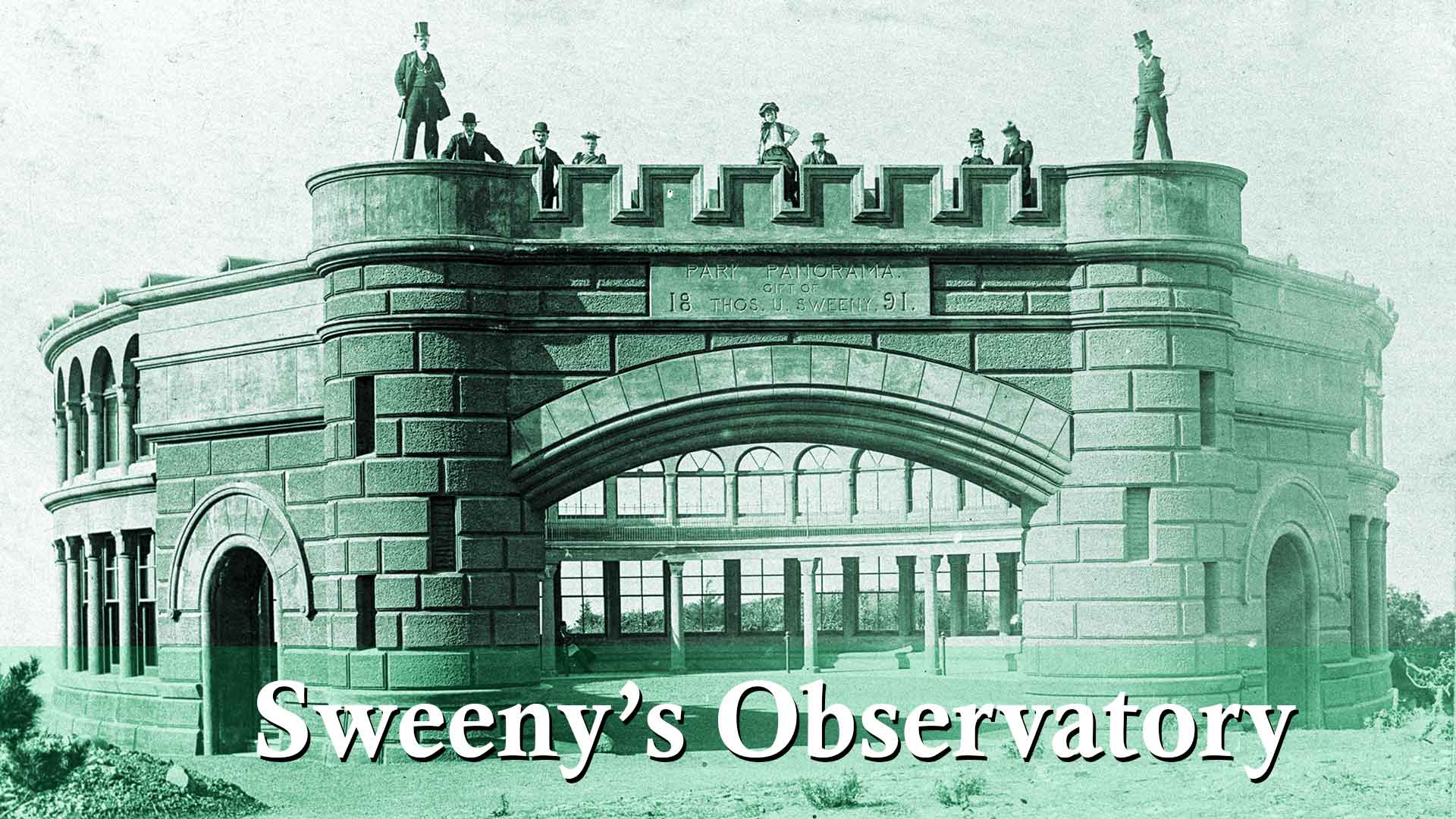
In past San Francisco Stories I’ve written about hubristic 19th century observatories on Telegraph Hill and Russian Hill.
When we humans see a hill, we want to put something on top of it. Maybe it’s an old instinct of war to create a defensive position and a higher viewpoint to spot the invading army. Or maybe as creative animals we are unable to resist “improving” nice things. Ego and avarice play their parts, of course.
I’m obviously just as fascinated with the idea and have yet another folly to share, a faux castle that once faux defended Golden Gate Park’s highest point.
On September 19, 1891, an observatory was dedicated atop the park’s Strawberry Hill, a 409-foot, mostly bare prominence named for the wild strawberries that grew on its slopes.
The idea, funding, and name for the unusual edifice came from Thomas U. Sweeny, a man who may have lacked the regular third “e” in his last name, but had $8,000 to persuade the park commission to build a mini-castle of red-tinted concrete.
Sweeny owned a lot of land in today’s Inner Sunset District, had a clear view of Strawberry Hill from his home at today’s 7th Avenue and Judah Street, and obviously felt the mount needed something more…medieval.
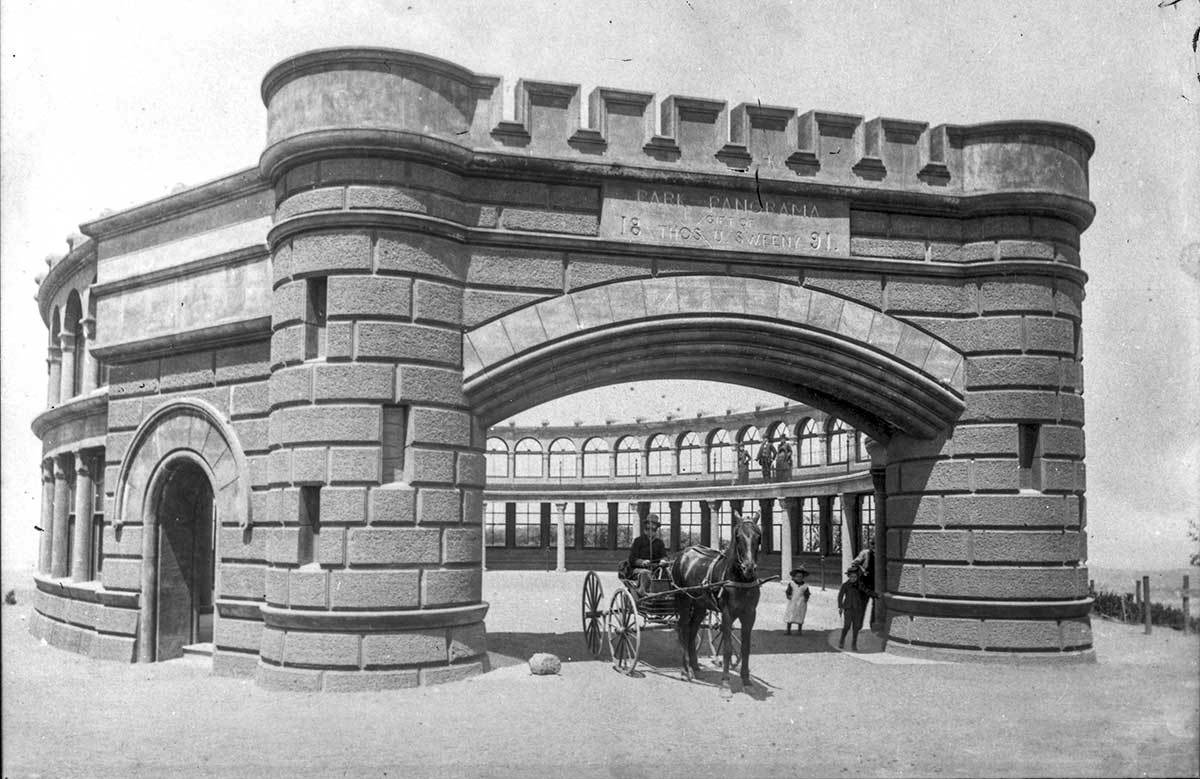
We think of observatories as homes for telescopes, but Sweeny’s was more of a castellated amphitheater and windbreak. A gravel path wound up the hill to lead carriages between bastion towers into an oval of windows. Visitors had dozens of frames to enjoy the 360˚ view in slices.
From a distance, the observatory appeared as a decorative crown on the hill or a half-collapsed fortification from antiquity. A glassed-in second story was added in 1892 to offer visitors a more elevated prospect. A plaque set in the crenelated entry arch read “Park Panorama, Gift of Thos. U. Sweeny, 1891.”
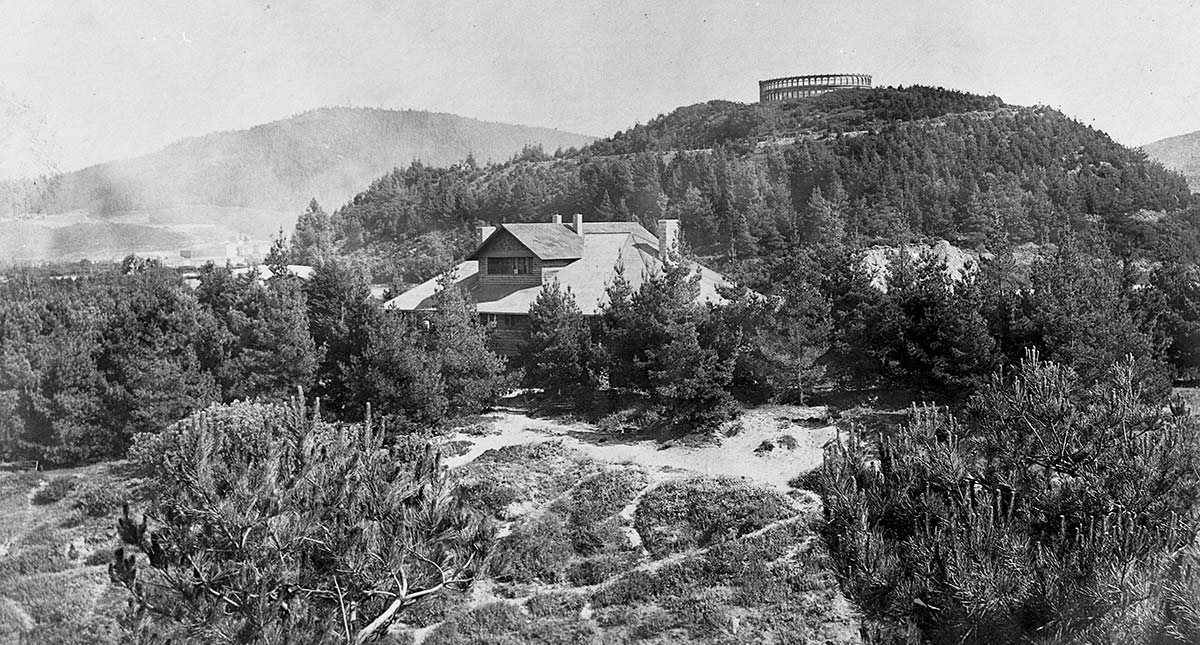
Now we take it for granted that donors have their names on hospitals, schools, and museum wings. From Alvord Lake to the Murphy Windmill, just about every pond, grove, path, and gate in Golden Gate Park has a rich person’s name on it. But Sweeny’s donation was perhaps the first in the park with a proviso that his name be attached.
Golden Gate Park historian Ray Clary wrote in The Making of Golden Gate Park. The Early Years: 1865-1906 that when the park commission accepted both Sweeny’s offer and his naming condition, they were “completely reversing former park policy that the park was to be rustic in nature and that all forms of personal advertisement and self-aggrandizement were to be prohibited.”
Clary also wrote that the observatory greatly offended the first park superintendent, William Hammond Hall, who designed the park to be naturalistic and free of monuments such as castle observatories (or massive Ferris wheels).
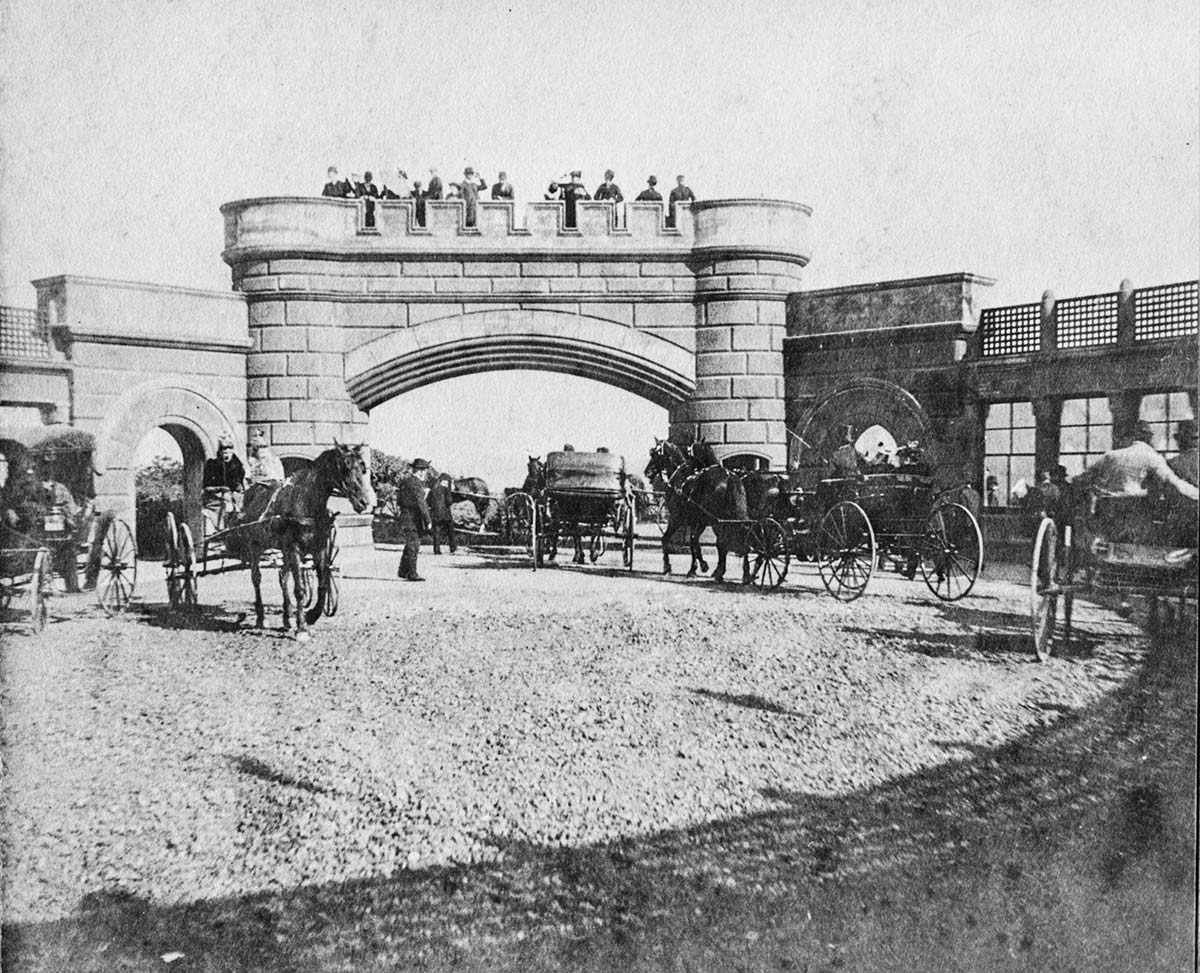
With the metaphorical no-names wall breached, the park soon had (Collis P.) Huntington Falls, which cascaded from a holding pool in front of Sweeny Observatory down to (William W.) Stow Lake. A complete and picturesque re-imagining of scrubby Strawberry Hill was completed by the opening of the Midwinter Fair in 1894.
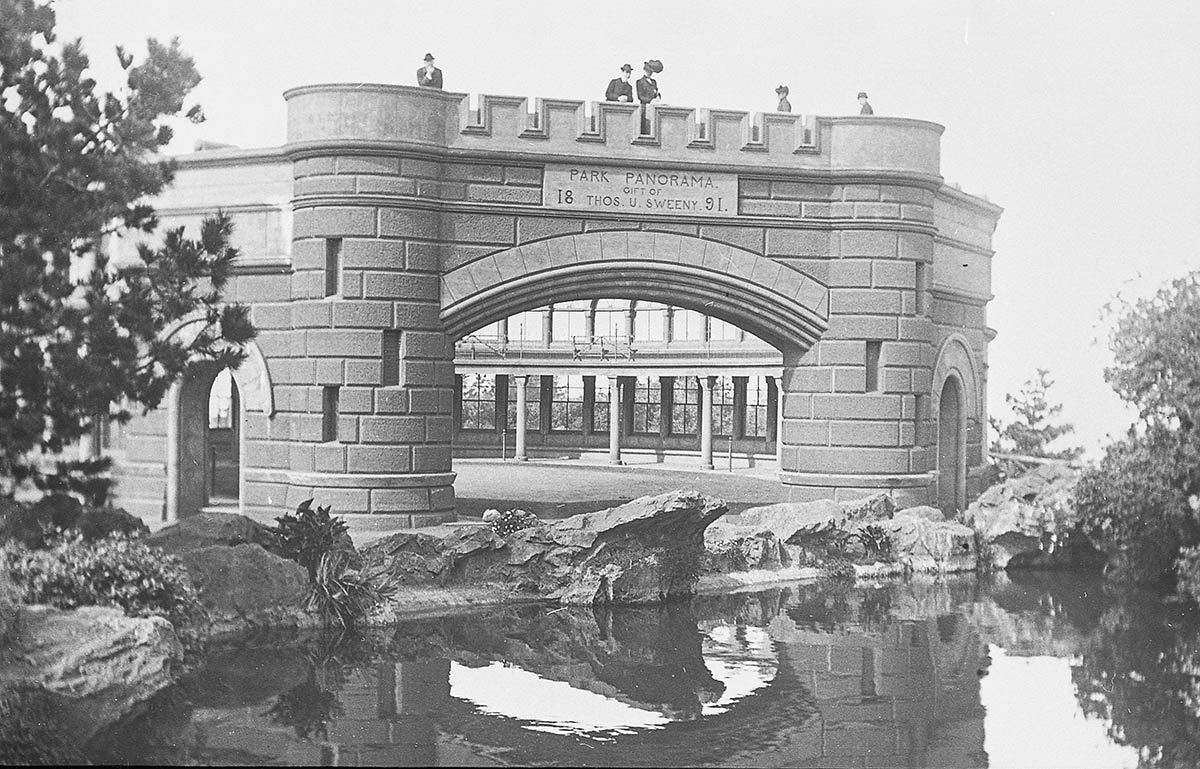
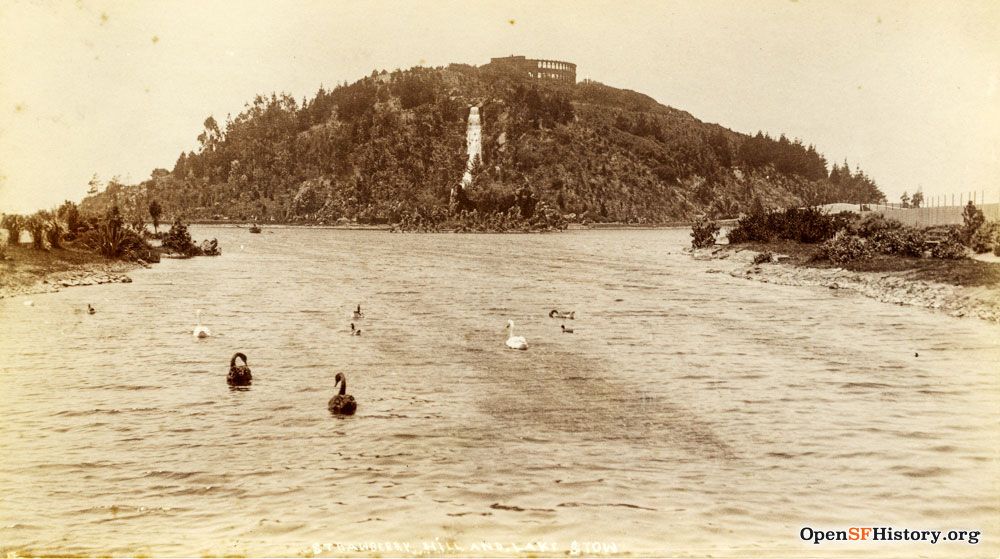
Sweeny died in January 1900. A bequest in his will to “complete” the observatory—Add a roof? Funding for archers to guard the battlements?—was successfully contested by his heirs, despite a Park Commission suit to get the money.
The observatory met its practical end on the morning of April 18, 1906, when the great earthquake made the folly a true ruin. William Hammond Hall, according to Ray Clary, saw divine justice: “Apparently, a Higher Power has taken matters into His own hands.”
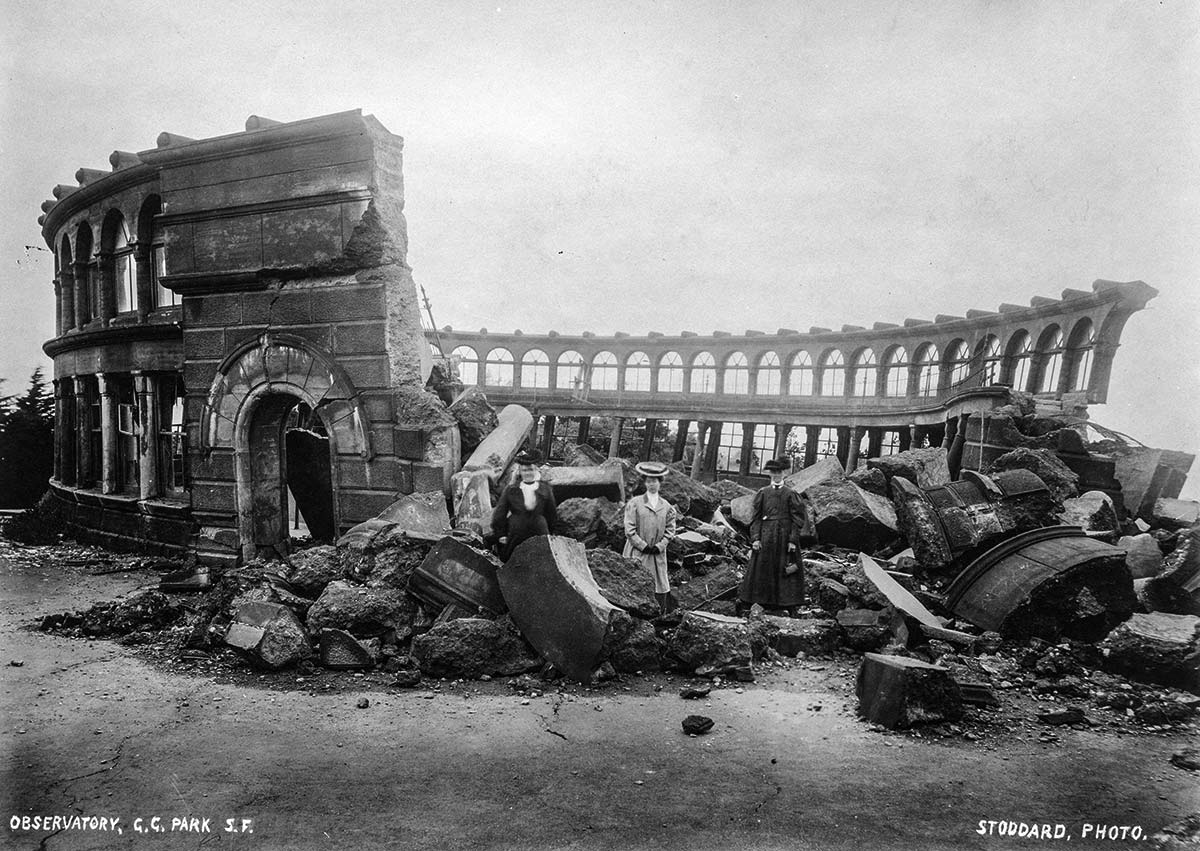
For many decades the remains of Sweeny’s Observatory moldered in a heap at the top of Strawberry Hill. Gardeners mined chunks to use as fill and border walls throughout the park.

Some of the observatory’s red-tinted concrete foundation remains. A couple of massive Monterey Cypress trees stand in of the oval footprint of the former folly. Sweeny’s name is unknown to all but a few historians.
Take note, potential philanthropists.
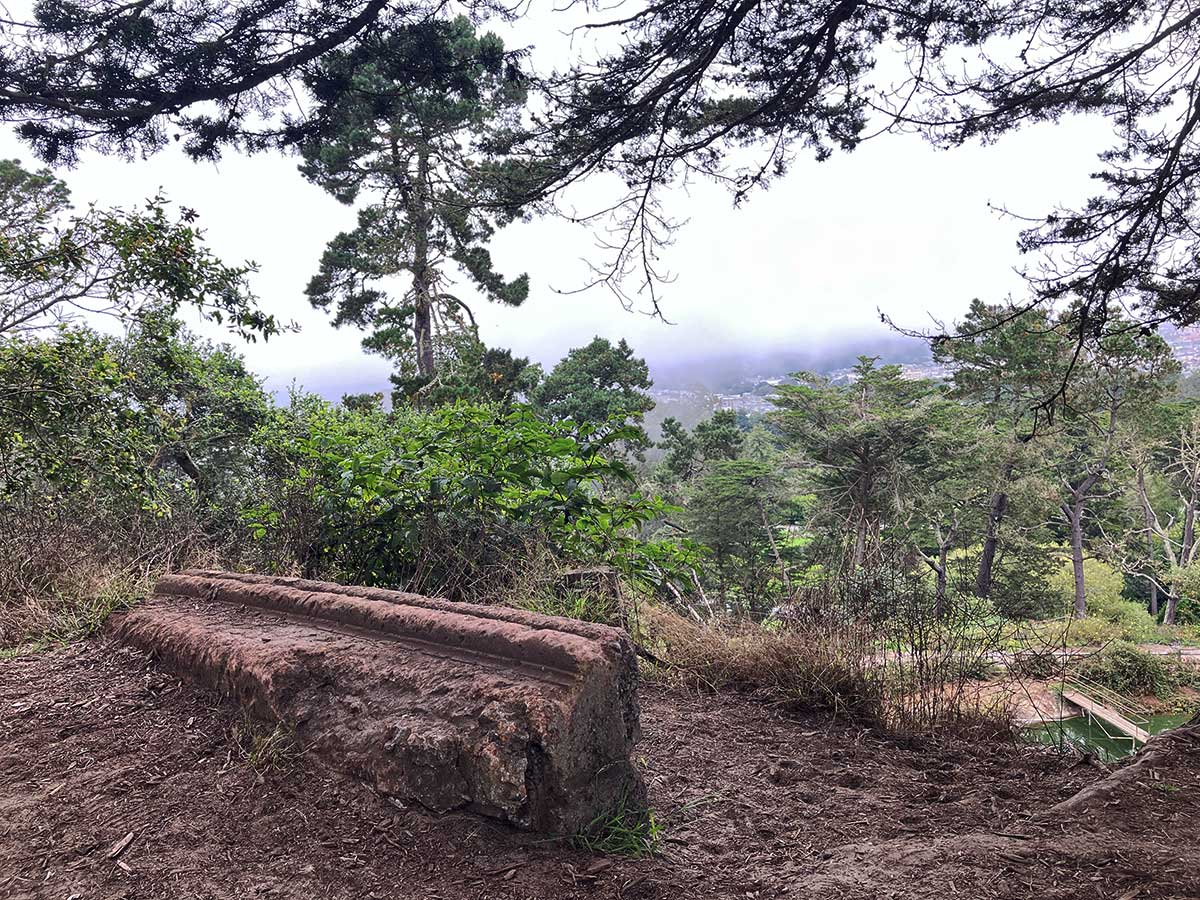
Note #1: Sweeny’s name may actually have had three “e’s,” but that's not how it was spelled on the observatory, so tough luck to him,
Note #2: Stow’s name is likely to be removed from Strawberry Hill’s lake. My friend Angus has a good replacement in mind.
Woody Beer and Coffee Fund

Portals, the old comfortable dive on West Portal Avenue, is now fancied up as “The Sherwood,” where you can sip a horchata cream ale (!) in front of a fireplace. But for all that, the bartender blasted Led Zeppelin the entire two hours that LRE (F.O.W.) and I enjoyed each other’s company. Blood will out, as they say.
Thanks to David F. (F.O.W.) for funding our outing with his contribution to the not-a-nonprofit Woody sociability fund. Kick in if you are inclined.
Nancy and I are likely in Mexico City as you read this, but when I get back I owe you a beverage. Let me know when is good for you.
Sources
“The Park Panorama,” San Francisco Chronicle, September 20, 1891.
Raymond H. Clary, The Making of Golden Gate Park, The Early Years: 1856-1906, pgs. 100-101.

